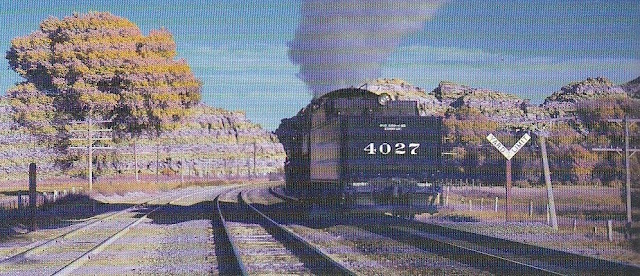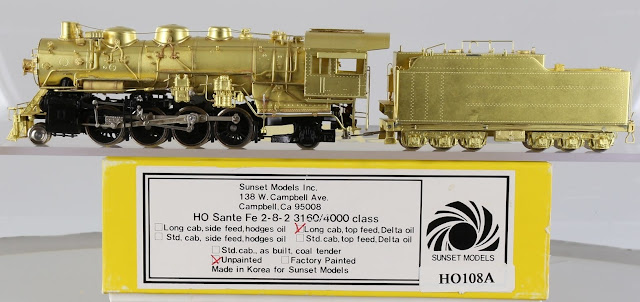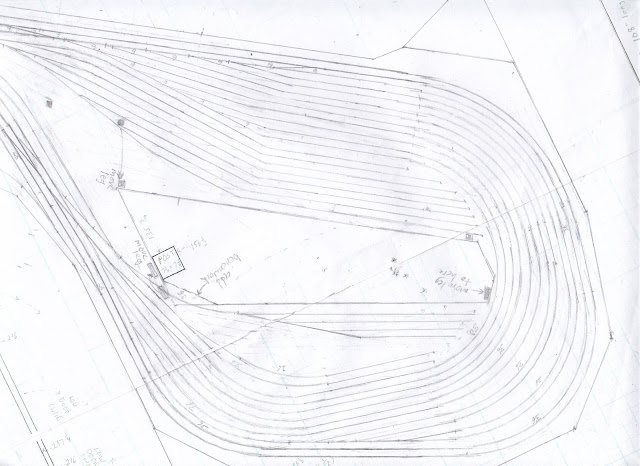This time we'll take a look at Santa Fe's heavy 4000-class 2-8-2 steam locos, some of which operated in Victorville, and then we'll discuss more revisions to the staging yard designs. I was gone on vacation this past week, so not a lot got done since last time.
During 1921-1926 the Santa Fe acquired 101 heavy 2-8-2 Mikado locos, numbered 4000 to 4100. These were a continuation of the previous 3160 class, which had 128 locos.
Here is one of them, #4068, in action:
During the postwar years on Cajon Pass, these locos normally served as helpers. Here's a Chard Walker photo of #4027 as it returns to Victorville after helping a train to Summit in Nov. 1948 (note the Upper Narrows in the background):
Here's another Chard Walker photo, this time showing #4025 working in Victorville, with the stock pen in the background:
In June of 1950 Stan Kistler photographed #4010 as it helped a Green Fruit Express train with F7s up the grade above Cajon station:
On the end of that same train, #4009 was a rear-end helper. Here we see #4009 at rest in the postwar years:
By the way, #4000-4014 were a little different from the later ones, as they had Hodges trailing trucks instead of the later Delta trucks. Locos that came with one sand dome later got a 2nd one. Most got an extended cab after 1940, and most eventually got a modern Elesco feedwater heater.
Some of these locos operated as helpers in Victorville until about mid-1951, when the Santa Fe stopped using them in this area. They were also sometimes used on the local freights.
There have been HO scale brass models of various versions of these locos over the decades, such as by PFM in 1962-63, Sunset in 1977, Key in 1988, and Sunset again in 1992, and I have a few of them.
Here's an example of one of the Key models:
And here is one of the Sunset models (note the variations on the box label):
In the last year or so, Broadway Limited Inc. has produced a nice styrene model of the postwar version of #4015-4100, such as this model of #4023:
These are still on the market, with lower prices now, so I might want a second one!
Before I went on vacation, I made some revisions to my staging track plan. Following more advice from Tim Fisher, I removed most of the stub tracks that came off backward from another track, as they are not worth the cost of the turnouts to connect to them. I also revised some of the connections among the tracks that feed into the return loop.
The plans are now up to Version 3. Here is the revised main peninsula plan, with the large, curving A Yard of double-ended tracks, and the adjacent B Yard with stub-ended tracks:
And here is the revised turntable area:
I also revised the straight-line schematic to show the current plan:
Finally, I remeasured the storage lengths of the all the tracks that had changed. Here is the current list of storage tracks and their lengths and radii, if any:
I'm still discussing any further improvements with Tim Fisher, along with an operating scheme for how the staging tracks would be used. Here are some thoughts:












No comments:
Post a Comment